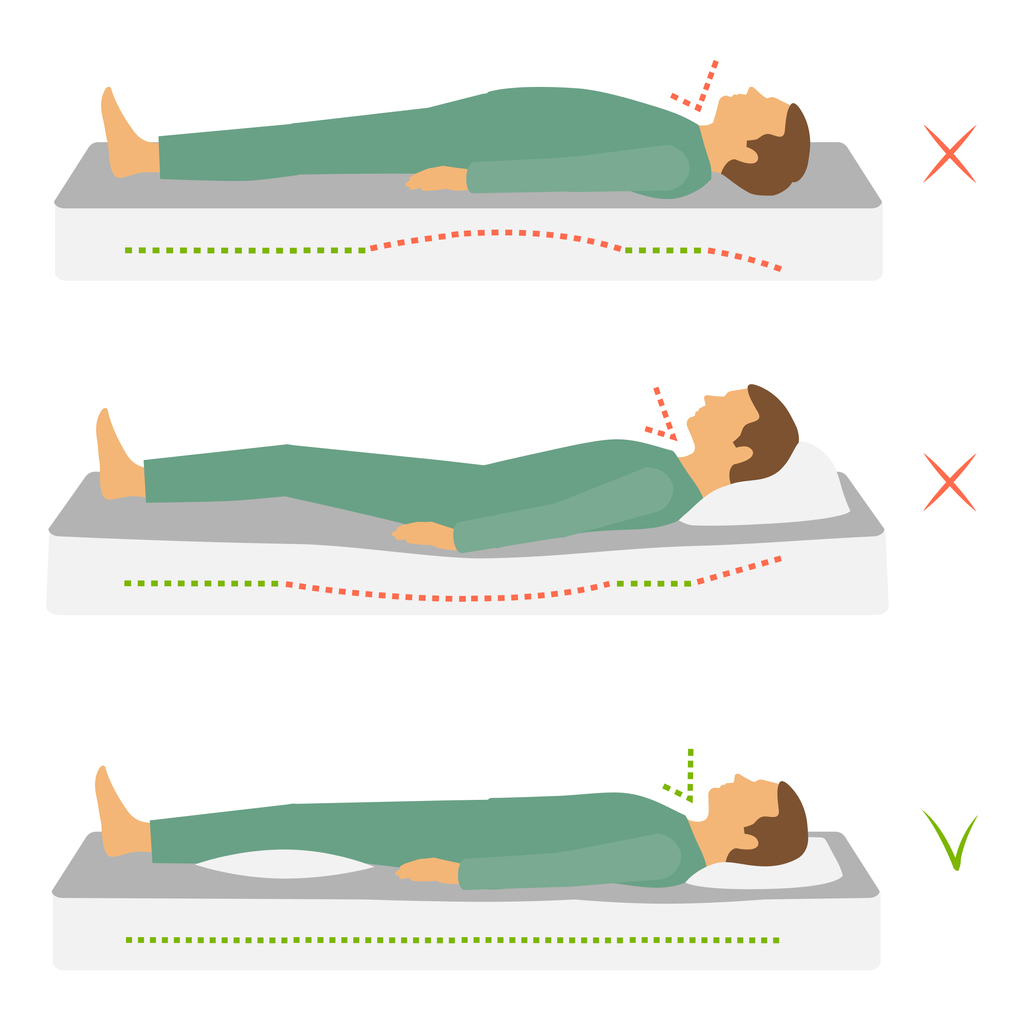What is the healthiest way to sleep?
It is generally agreed that lying on your side, particularly on the left, is the one of the healthiest ways to sleep. This is because it is good for digestion - you are less likely to get constipation, acid reflux and it helps with the movement of bile. It can also be beneficial for aches and pains in the back and neck.
Sleeping on your back is also a good way to sleep as it can take some strain off the muscles and joints.
On the other hand, sleeping on your front is the least desirable sleep positions as it can upset digestion and worsen problems like congestion. It also has the potential to make various aches and pains worse, as I will soon explain.
Joint pain – sleep positions to avoid
Joint pain is a common occurrence, particularly as we get older and wear and tear takes its toll. Also, for women going through the menopause, joint pain can often arise as a result of the changes in hormone levels at this time.
Joint pain often disrupts sleep but one way to manage this is to change your sleep position. Some problematic sleep positions for this kind of ailment include:
- Lying on your front – This puts pressure on the neck and shoulders as you will have to turn your head to breathe. Putting your arms over your head is particularly bad for the shoulders too.
- Foetal position - If you experience joint pain, particularly in the knees, it is not a good idea to sleep curled up on your side as this will put more strain on the joints and they can becomes stiff as well as sore.

How should I sleep with joint pain?
When you have joint pain, sleeping on your back is preferable so spread out like a big star and add a pillow under your legs or shoulders, depending on where there is most discomfort, for extra support.
It's also important to ensure your pillows are neither too firm nor too high as this is likely to make the joints stiff and sore in the morning. Memory foam mattresses and pillows, in particular, can be quite firm.
Changing your sleep position can be hard as habits are usually set early in life. Plus, even when we have the intention of changing, we aren't always successful. When we go to bed we often toss and turn so, by the time we do actually get to sleep, we are back to our regular sleep position.
However, with a bit of perseverance, it is possible to change how you sleep. Put a little reminder by your bed as this may help keep up the habit.
Neck and back pain – sleep position to avoid
There are several reasons that neck and back pain might occur – perhaps there has been a recent injury, you've experienced stress, or a condition such as osteoarthritis has developed.
As we are asleep for hours at a time, we want to get our sleep position right - if it isn't, then any existing neck or back pain is likely to get worse.
If you experience these problems, it can be helpful to avoid sleeping on your front as:
- It puts pressure on the neck and shoulders
- It fails to provide any support for the spine
- It puts strain on the neck as we have to twist it in order to breathe
- It arches the back which isn't a natural position to maintain for long periods of time.

How should I sleep with back and neck pain?
Sleeping on your back will support the neck and spine, thus helping to take away some of the tension in this area. You could also put a cushion under your lower back or neck for additional support.
Lying on your side with a cushion propped between your thighs is another option. Not only will this keep your back in its natural curved position, it also takes a bit of the strain off your hips and back.
A feather cushion is often recommended for this because it moulds into shape, however, there are lots of friendlier, greener alternatives that have a similar effect. Look into hollow buck wheat pillows which are organic and eco-friendly. This is quite a firm pillow but should mould to the shape of your head and neck, making it comfortable and supportive.
If you are used to sleeping on your front, a horseshoe pillow may make you more comfortable, at least until you get used to trying one of the alternative positions above.
Other sleep-related tips to ease aches and pains
Whilst taking steps to address your sleep position is a good way to help ease aches and pains, there are a few other things you may want to try in addition to this:
Look at your mattress - An old or lumpy mattress can worsen aches and pains and disrupt sleep. A dip in the surface of the mattress, being able to feel the springs and creaking are all signs that your mattress is due to be replaced. This should generally be done every 8 years or so.
Avoid sleeping on the couch – This one should go without saying as a couch does not provide adequate support for the muscles, joints and, in particular, the back. This makes it more likely that you'll wake up feeling achy and stiff in the morning. To avoid falling asleep on the couch in front of the television, try winding down by having a hot bath or reading a book in bed.
Apply Atrogel to the area – Atrogel Arnica Gel is anti-inflammatory in its effects. Applying a little to the affected area before you go to bed, as well as in the morning when you get up, can help to soothe pain and stiffness.
My Top Tip:

Apply 2-10 cm of Atrogel between 2 and 4 times daily.
"Very helpful for tired muscles and sore joints."

Stretch in the morning and evening – Loosening off the muscles and joints before and after sleep can further aid aches and pains. Head over to our Get Active hub for some easy-to-follow videos on stretching.
Reduce caffeine intake – Not only is caffeine inflammatory in nature, it is also a stimulant. Caffeine lingers in our system for hours so, if we have a cup in the afternoon, it can keep us awake when we head to bed at night.
Try a cup of herbal tea as an alternative – chamomile is a good option is this is thought to have a relaxing effect on the nervous system which could aid sleep.
Remember to change your pillow – A pillow that is old may fail to provide adequate support. It is recommended we change our pillows about every 18 months or so.
Results: When does joint pain affect you most?






 Looking for a treatment to relieve pain in conditions such as muscle aches or pains, stiffness, rheumatic pain or after sporting injuries?
Looking for a treatment to relieve pain in conditions such as muscle aches or pains, stiffness, rheumatic pain or after sporting injuries?

